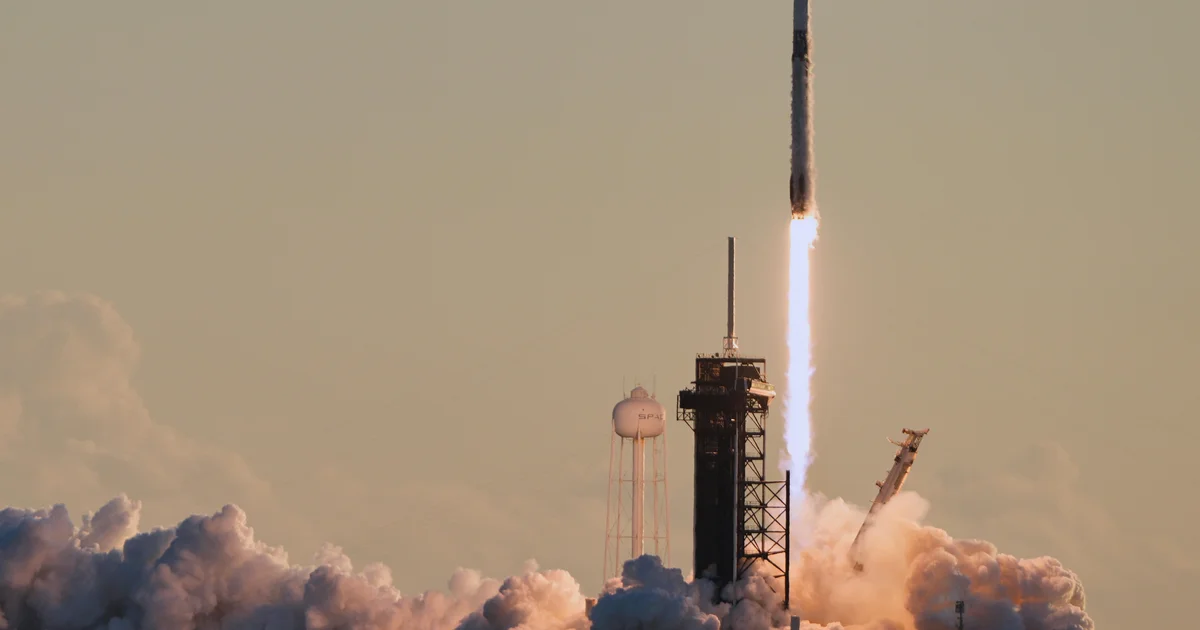
A cluster of space weather satellites blasted off Wednesday morning to cast fresh eyes on solar storms that can produce stunning auroras but also scramble communications and threaten astronauts in flight.
The three satellites soared from Kennedy Space Center shortly after sunrise on the same SpaceX rocket. They aimed for a sun-orbiting lookout 1 million miles from Earth, each on its own separate mission.
Altogether, the satellites from NASA and the National Oceanic and Atmospheric Administration, plus related costs, are worth about $1.6 billion. NASA’s Joe Westlake calls it “the ultimate cosmic carpool” by sharing a rocket to save money.
Heading the lineup is NASA’s Interstellar Mapping and Acceleration Probe, the first to be deployed. The mission “will use 10 scientific instruments to chart a comprehensive picture of what’s roiling in space, from high-energy particles originating at the Sun, to magnetic fields in interplanetary space, to remnants of exploded stars in interstellar space,” said NASA in a description of IMAP.
The probe will scrutinize the outer limits of the heliosphere, the protective, solar wind-driven bubble of gas around our solar system, according to the space agency.
As a bonus, IMAP will also be capable of providing advance notice of solar storms — a valuable 30-minute heads-up — for astronauts exploring the moon under NASA’s Artemis program. Officials expect the observatory to be fully operational by the time four astronauts fly around the moon and back next year.
SpaceX shared video of Wednesday’s launch in a social media post, which showed IMAP rocketing up from the ground at the Space Center in Cape Canaveral, Florida.
NASA’s smaller Carruthers Geocorona Observatory also is flying, focusing on Earth’s outermost, glowing atmosphere that extends well beyond the moon. It’s named after the late scientist George Carruthers, who invented the ultraviolet telescope left on the moon by the Apollo 16 astronauts in 1972.
NOAA’s newest space weather observatory will be pushed into full-time, around-the-clock forecasting service. It will keep tab on the sun’s activity and measure the solar wind to help keep Earth safe from threatening flares.
Officials expect NASA’s satellites to be in position and operational by the beginning of next year, and NOAA’s spacecraft by spring.
NASA is kicking in more than $879 million for its two missions, while NOAA’s share is $693 million.
While NASA already has a fleet of sun-observing spacecraft, science mission chief Nicky Fox said these newer missions offer more advanced instruments that will provide more sensitive measurements.
“Just being able to put all those together to give us a much, much better view of the sun,” she said.
The goal is to better understand the sun in order to better protect Earth, according to officials. As spectacular as they are, the northern and southern lights will not be the missions’ focus.
During a preview of NASA’s upcoming Artemis mission around the moon, science officials said Tuesday that these new space weather missions will enhance forecasting and provide vital alerts if major solar activity strikes. If that happens, the four astronauts will take temporary shelter in a storage area under the capsule’s floor to avoid the heightened radiation levels.
The launch this week took place during a surprisingly active period for the sun, according to a recent study conducted by two NASA scientists, who noted that the uptick could affect space weather patterns as well as technology on Earth. Officials at NASA said each of its satellite missions will aim to better track those patterns, along with TRACERS twin satellites that SpaceX helped NASA launch several months ago to study how electrically-charge solar wind interacts with Earth’s magnetic field.
“Space weather predictions are critical for supporting the spacecraft and astronauts of NASA’s Artemis campaign, as understanding the space environment is a vital part of mitigating astronaut exposure to space radiation,” NASA said in a statement.



